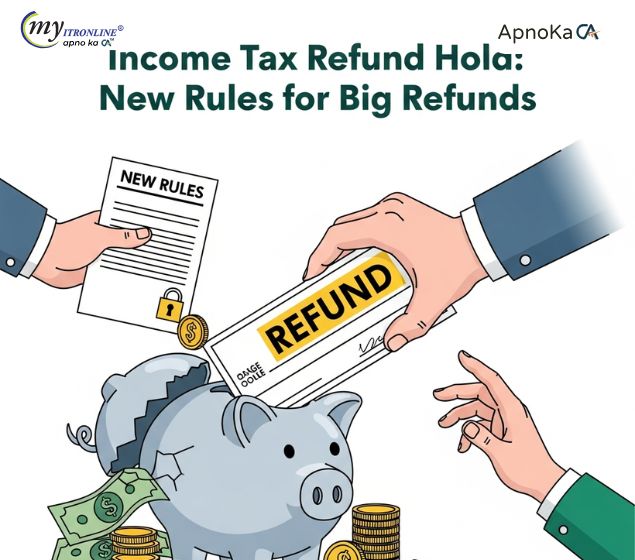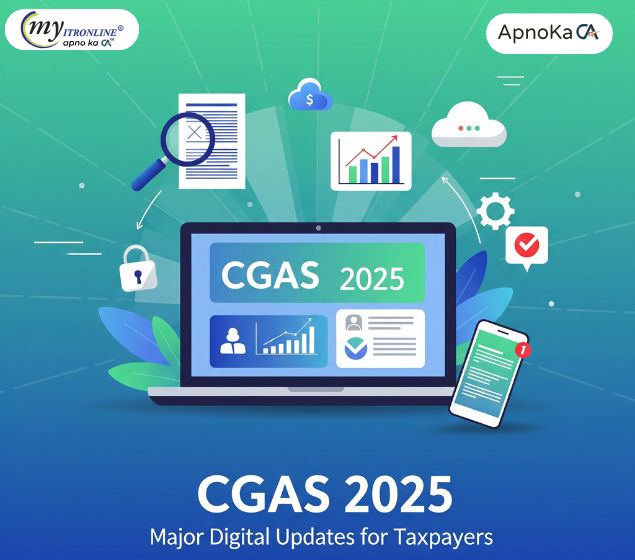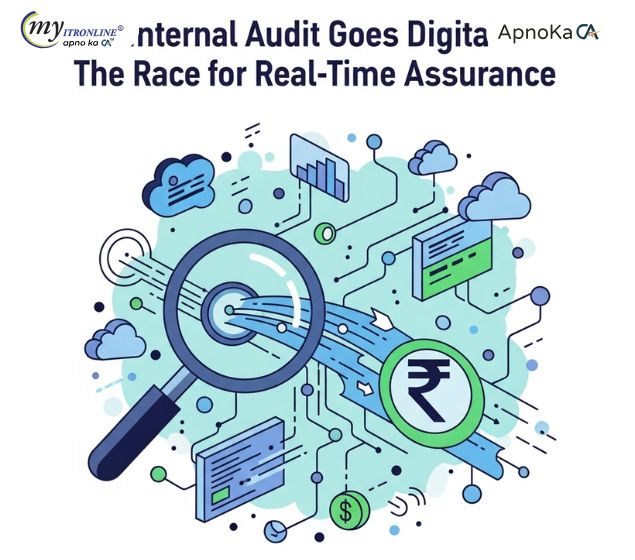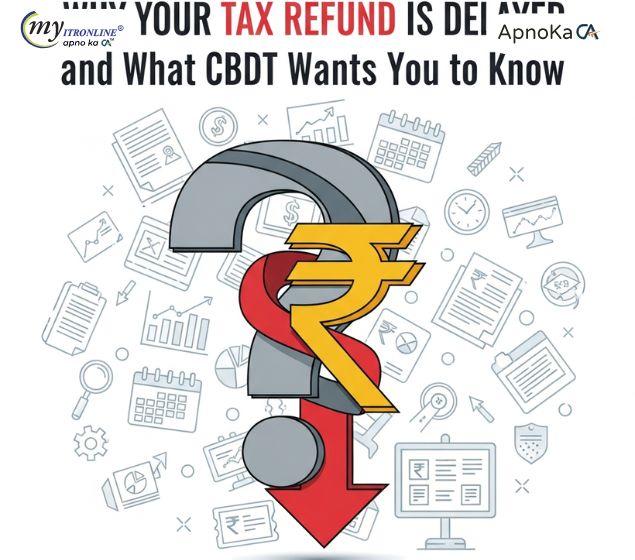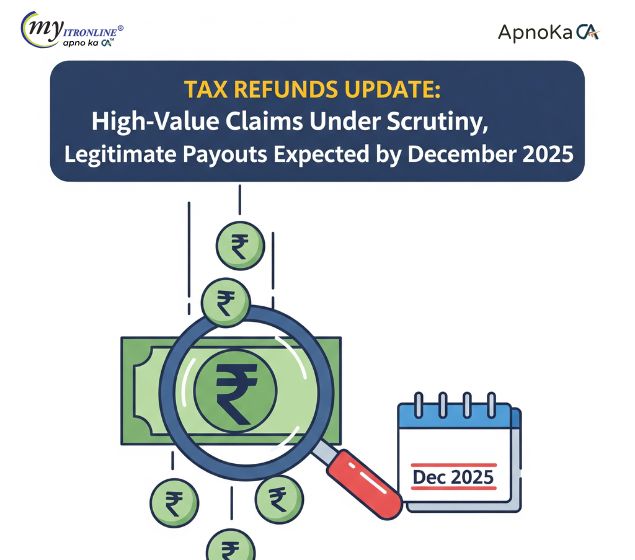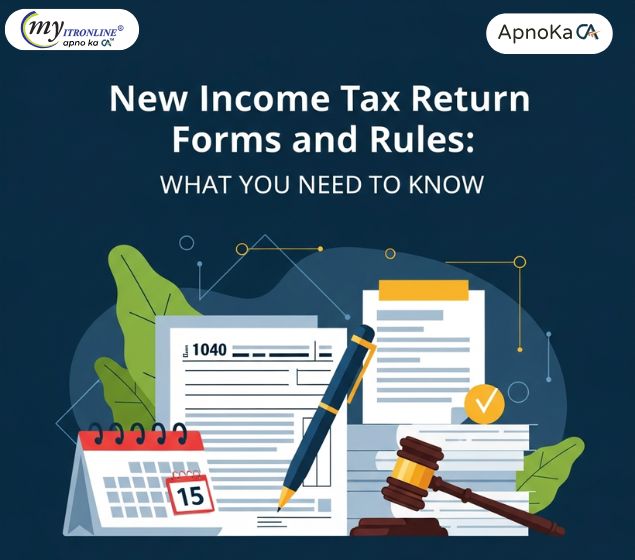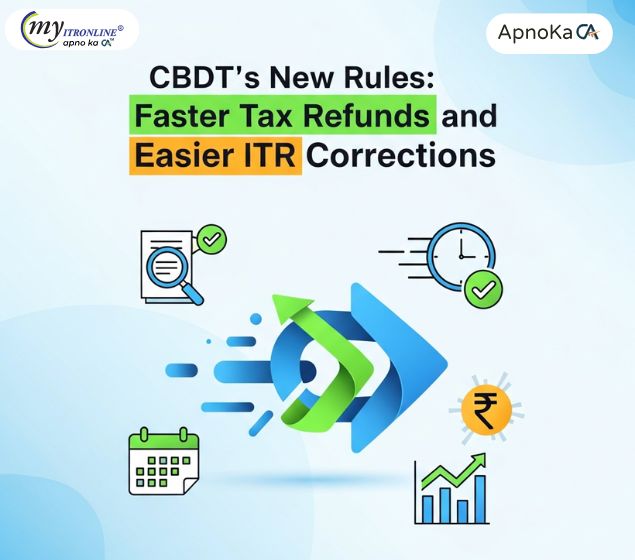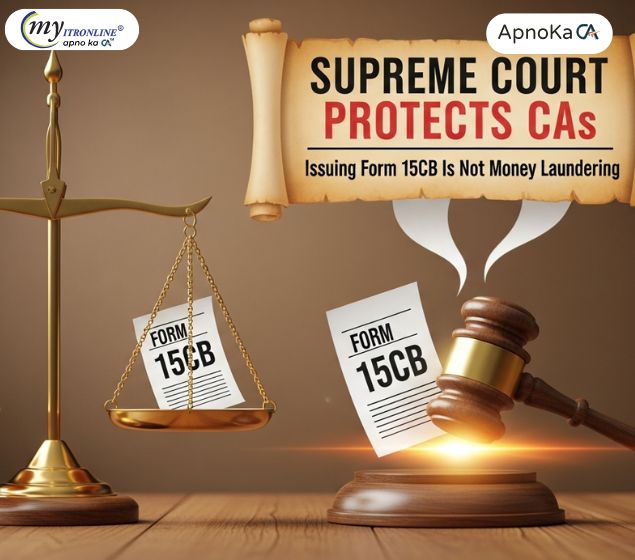Filing ITR AY 2025-26? Must-Know Updates on Reporting & Capital Gains
This blog post details the significant updates in India's Income Tax Return (ITR) forms for Assessment Year 2025-26 (FY 2024-25). It covers the default New Tax Regime and the opt-out process using Form 10-IEA, major changes in capital gains reporting including simplification for small investors (LTCG up to ₹1.25 lakh in ITR-1/4) and bifurcation of Schedule CG (pre/post July 23, 2024). It also explains key tax reporting updates like mandatory TDS section codes, enhanced deduction reporting via dropdowns, new rules for Section 80GG (Form 10BA), increased presumptive tax limits, and the revised threshold for Schedule AL. It concludes with a guide on choosing the correct ITR form and important filing deadlines.
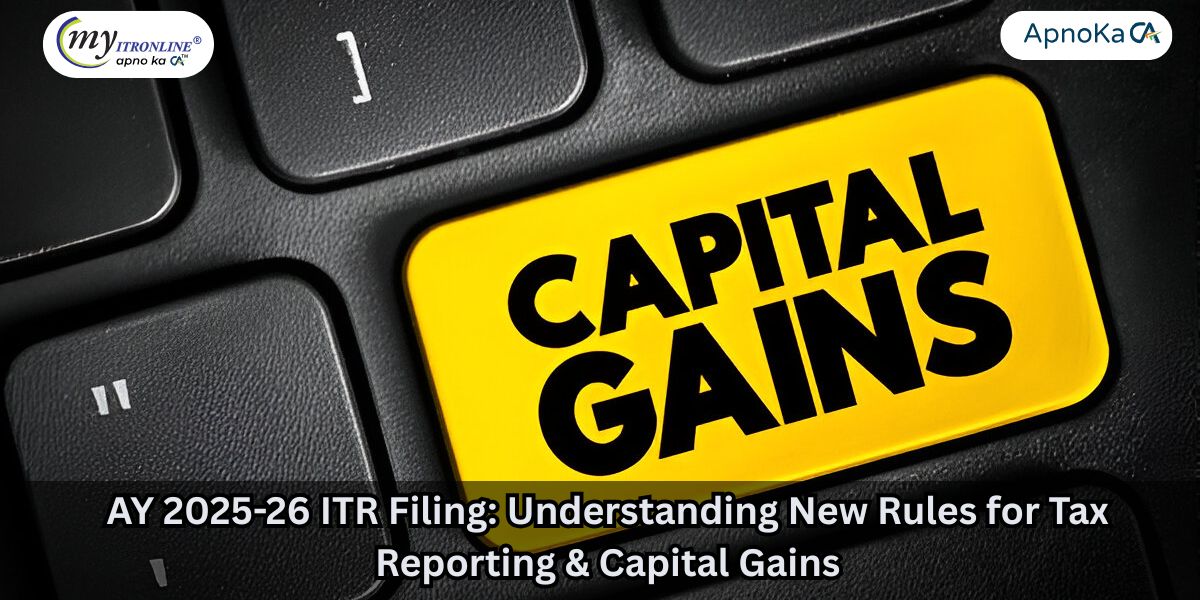
ITR Forms AY 2025-26: What's Changed in Tax Reporting and Capital Gains?
The start of the tax filing season brings with it the crucial task of understanding any changes in the Income Tax Return (ITR) forms. For the Assessment Year 2025-26 (relating to income earned in the Financial Year 2024-25, i.e., April 1, 2024, to March 31, 2025), the Central Board of Direct Taxes (CBDT) has notified several ITR forms, including ITR-1 (Sahaj), ITR-4 (Sugam), ITR-3, and ITR-5.
These updates aim to enhance transparency, improve compliance, and, in some cases, simplify the process for specific taxpayer groups. Let's dive into the major changes, especially concerning tax reporting procedures and capital gains.
1. The New Tax Regime: Default Choice & Opt-Out Process
- Default Regime: The New Tax Regime (under Section 115BAC) continues to be the default option for individuals and HUFs. This regime offers lower tax rates but fewer exemptions and deductions (like those under Section 80C, HRA, etc.).
- Opting for the Old Regime:
- Salaried Individuals (without Business Income - using ITR-1): If you want to use the Old Tax Regime (which allows various deductions), you can simply indicate your choice by ticking the relevant option ("Opting out of new regime") within the ITR-1 form itself. Filing Form 10-IEA is not mandatory for this category.
- Individuals/HUFs with Business/Professional Income (using ITR-3/ITR-4): If you wish to opt out of the New Regime and choose the Old Regime, you must file Form 10-IEA electronically on or before the due date for filing your ITR (usually July 31st or October 31st, depending on audit requirements). You will need to mention the acknowledgement number and filing date of Form 10-IEA in your ITR. Missing this step means your return will likely be processed under the New Tax Regime by default.
- Switching Back (Business Income): Remember, individuals with business income who opt out of the new regime can only switch back to it once. After switching back, they cannot opt for the old regime again in subsequent years. Salaried individuals without business income do not face this restriction.
2. Spotlight on Capital Gains Reporting: Simplification & Segregation
This area sees some of the most significant updates for AY 2025-26:
- Major Simplification for Small Investors (ITR-1 & ITR-4):
- Taxpayers (eligible for ITR-1 or ITR-4) who have Long-Term Capital Gains (LTCG) only from the sale of listed equity shares or units of equity-oriented mutual funds (taxable under Section 112A) can now report these gains directly in ITR-1 or ITR-4, provided the total gain does not exceed ₹1.25 lakh during the financial year.
- Crucially, this applies only if you have no capital losses to be set off or carried forward.
- A specific field for reporting such exempt LTCG (up to the ₹1.25 lakh threshold) has been added under the 'Exempt Income' dropdown in these forms.
- Impact: This is a major relief, as previously, any capital gains (even small amounts) required filing the more complex ITR-2 or ITR-3. This makes filing easier for many salaried individuals and small business owners with modest investments.
- Schedule CG Split (ITR-3 & ITR-5):
- The Schedule for Capital Gains (Schedule CG) in forms like ITR-3 and ITR-5 has been bifurcated.
- Taxpayers must now report capital gains/losses separately for transactions occurring:
- Before July 23, 2024
- On or After July 23, 2024
- Reason: This split aligns with changes introduced potentially via the Finance Act, 2024, which may have altered tax treatments for certain capital gains mid-year (e.g., reported proposals regarding LTCG on property). This segregation ensures accurate reporting based on the applicable rules during different periods of the financial year.
- Capital Loss on Share Buyback (ITR-3 & ITR-5):
- For transactions occurring after October 1, 2024, a capital loss arising from a share buyback can only be claimed if the corresponding dividend income from that buyback has been declared under 'Income from Other Sources'. This aims to prevent misuse and ensure consistency.
- Enhanced Detail: Some forms may require more specific details within the capital gains schedule, such as sale value and cost basis, for better clarity and tracking.
3. Key Changes in Tax Reporting & Disclosures
Beyond capital gains, several other reporting requirements have been updated:
- Mandatory TDS Section Codes: When reporting Tax Deducted at Source (TDS) in the relevant schedule (Schedule-TDS), taxpayers must now specify the exact section code under which the tax was deducted (e.g.,
194Afor interest,194Cfor contracts,194Jfor professional fees). This improves accuracy and facilitates faster matching of TDS claims by the department. (Mentioned specifically for ITR-3, ITR-5 but likely applies across forms where TDS is claimed). - Detailed Deduction Reporting (Dropdowns): Forms like ITR-1, ITR-3, and ITR-4 now feature dropdown menus for claiming deductions under Chapter VI-A (like Section 80C, 80D, 80G, etc.). Taxpayers need to select the specific clause or sub-section under which the deduction is claimed (e.g., selecting 'Life Insurance Premium' or 'PPF' specifically under 80C). This enhances transparency and potentially reduces errors.
- Section 80GG Declaration (Form 10BA): Taxpayers claiming deduction for rent paid under Section 80GG (applicable if you don't receive HRA) must now mandatorily file the declaration in Form 10BA along with their ITR. Previously, a specific deadline wasn't prescribed, but now it's required at the time of return filing.
- Higher Presumptive Tax Limits (ITR-4):
- Section 44AD (Businesses): The turnover threshold for opting into the presumptive scheme is increased from ₹2 crore to ₹3 crore, provided 95% or more of total receipts are through digital modes.
- Section 44ADA (Professionals): The gross receipts threshold is increased from ₹50 lakh to ₹75 lakh, provided 95% or more of receipts are through digital modes.
- Increased Threshold for Schedule AL (ITR-3): The requirement for individuals/HUFs filing ITR-3 to report details of specified Assets and Liabilities (Schedule AL) is now triggered only if their total income exceeds ₹1 crore. The previous threshold was ₹50 lakh. This simplifies filing for taxpayers with income between ₹50 lakh and ₹1 crore.
- Section 44BBC (Cruise Business - ITR-3 & ITR-5): A specific reference to the presumptive taxation scheme for the cruise industry under Section 44BBC has been added.
- Bank Account Disclosure: Taxpayers generally need to report details of all bank accounts held in India at any time during the previous year (excluding dormant accounts).
4. Which ITR Form Is Suitable for You? (Quick Reference)
- ITR-1 (Sahaj): This form is meant for Resident Individuals with total income not exceeding ₹50 lakh derived from Salary, One House Property, and Other Sources (such as Interest). It also allows for LTCG under section 112A up to ₹1.25 lakh (provided there are no capital losses). However, it is not applicable for Directors or individuals with unlisted shares, foreign income/assets.
- ITR-4 (Sugam): This form is available for Resident Individuals, HUFs, and Firms (excluding LLPs) with total income capped at ₹50 lakh, and who have income from Business/Profession calculated presumptively (sections 44AD, 44ADA, 44AE). It now also allows LTCG under section 112A up to ₹1.25 lakh (if no capital losses exist). Directors and those with foreign assets/income cannot use this form.
- ITR-2: This form is designated for Individuals/HUFs having income sources similar to ITR-1 but exceeding ₹50 lakh OR owning more than one house property OR having capital gains that do not fall under the recent ITR-1 adjustments (for example, gains over ₹1.25 lakh, STCG, or gains from properties/other assets, as well as capital losses). It cannot be utilized by those with Business/Professional income.
- ITR-3: This form is for Individuals/HUFs earning income from Business or Profession (not qualifying for the presumptive scheme under ITR-4 or with income surpassing its limits). It contains the detailed Schedule CG, including a division for pre/post July 23.
- ITR-5: This form caters to Firms, LLPs, AOPs, BOIs, Artificial Juridical Persons, Estates, Business Trusts, Investment Funds, etc. It includes detailed Schedule CG and regulations for reporting buyback losses.
5. Significant Dates for AY 2025-26 Tax Filing
- For Individuals/Entities not necessitating an Audit: July 31, 2025
- Taxpayers who require an Audit: October 31, 2025
- Taxpayers producing Transfer Pricing Reports: November 30, 2025
- For Belated/Revised Returns: December 31, 2025
Conclusion
The updates to ITR for AY 2025-26 represent a blend of simplification for smaller taxpayers (particularly concerning LTCG reporting in ITR-1/4) alongside enhanced specificity and clarity in reporting for others (TDS sections, breakdown of deductions, and capital gains distinction). Being aware of these changes is vital for precise and timely tax submissions. Ensure that you collect all necessary documents, comprehend the reporting obligations relevant to your case, and select the appropriate ITR form. When uncertain, consulting a tax expert is always recommended. Wishing you successful filing!
FILING YOUR INCOME TAX RETURN F.Y 2024-25 (A.Y. 2025-2026) WITH MYITRONLINE
The income tax filing deadline is right around the corner. If you haven’t filed yet, do it today with Myitronline! Avoid last minute rush and file your tax return today on MYITRONLINE in Just 5 mins.(www.myitronline.com)
If you are looking for eCA assistance to file your income tax return/ GST, you can opt for MYITRONLINE eCA assisted plan starting
Upload Salary Individual Form-16
If you have any questions with filing your tax return, please reply to this mail. info@myitronline.com OR call 9971055886,8130309886.
Note-All the aforementioned information in the article is taken from authentic resources and has been published after moderation. Any change in the information other than fact must be believed as a human error. For queries mail us at marketing@myitronline.com
Krishna Gopal Varshney
An editor at apnokacaKrishna Gopal Varshney, Founder & CEO of Myitronline Global Services Private Limited at Delhi. A dedicated and tireless Expert Service Provider for the clients seeking tax filing assistance and all other essential requirements associated with Business/Professional establishment. Connect to us and let us give the Best Support to make you a Success. Visit our website for latest Business News and IT Updates.
Leave a reply
Your email address will not be published. Required fields are marked *Share this article
Krishna Gopal Varshney, Founder & CEO of Myitronline Global Services Private Limited at Delhi. A dedicated and tireless Expert Service Provider for the clients seeking tax filing assistance and all other essential requirements associated with Business/Professional establishment. Connect to us and let us give the Best Support to make you a Success. Visit our website for latest Business News and IT Updates.
View articles








